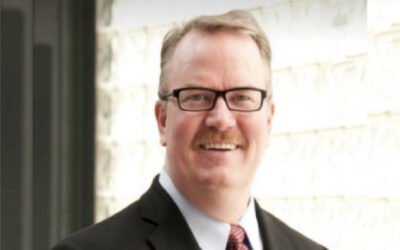By Mark Watts
 The 2023 Radiologic Society of North America (RSNA) conference proved to be a milestone event, showcasing cutting-edge advancements and addressing critical challenges in the field of radiology. This column serves as a comprehensive review as it delves into key trends discussed during the conference, emphasizing the evolving landscape of staffing, the transformative role of artificial intelligence (AI) in imaging, breakthroughs in therapeutic image-guided treatments, and the persistent challenges faced by rural health care.
The 2023 Radiologic Society of North America (RSNA) conference proved to be a milestone event, showcasing cutting-edge advancements and addressing critical challenges in the field of radiology. This column serves as a comprehensive review as it delves into key trends discussed during the conference, emphasizing the evolving landscape of staffing, the transformative role of artificial intelligence (AI) in imaging, breakthroughs in therapeutic image-guided treatments, and the persistent challenges faced by rural health care.
Staffing Shortages in Radiology: A Looming Crisis:
The shortage of skilled radiologists and support staff emerged as a prominent theme at the 2023 RSNA conference. The increasing demand for imaging services, coupled with a growing workload, has intensified the existing staffing crisis. Key points of discussion included:
- Workload Management Solutions: Innovative technologies aimed at automating routine tasks and optimizing workflow to alleviate the burden on radiologists. Implementation of efficient scheduling systems to maximize the utilization of available workforce.
- Training and Education Initiatives: Collaborative efforts between academic institutions and health care organizations to address the shortage by enhancing training programs. Integration of virtual reality and simulation technologies for immersive training experiences.
- Global Perspectives: Insights from international experts discussing strategies employed in other regions to mitigate staffing shortages. Examination of cross-border collaborations to share expertise and resources.
AI in Imaging: Revolutionizing Diagnostics and Beyond:
The RSNA conference served as a platform for showcasing the ever-expanding role of AI in radiology, revolutionizing diagnostic processes and contributing to personalized patient care. Key discussions included:
- Deep Learning Algorithms platforms: Advancements in deep learning algorithms for image interpretation, with a focus on their accuracy and efficiency in detecting abnormalities. Integration of AI tools into radiology workstations to provide real-time decision support.
- Ethical Considerations: Panel discussions exploring the ethical implications of AI in radiology, including issues related to bias, transparency and patient consent. Development of ethical guidelines to govern the responsible use of AI technologies.
- Collaboration between Humans and Machines: Emphasis on the symbiotic relationship between radiologists and AI, highlighting scenarios where human expertise complements machine capabilities. Discussions on the importance of ongoing education for radiologists to adapt to the evolving technological landscape.
Therapeutic Image-Guided Treatments – Paving the Way for Precision Medicine:
The conference showcased groundbreaking developments in therapeutic image-guided treatments, heralding a new era in precision medicine. Key highlights included:
- Interventional Radiology Innovations: Advancements in interventional radiology techniques for targeted treatments, including embolization, ablation and drug delivery. Integration of imaging modalities such as MRI and CT for real-time guidance during therapeutic procedures.
- Minimally Invasive Therapies: Exploration of minimally invasive alternatives for conditions traditionally treated through surgery, with a focus on improving patient outcomes and reducing recovery times. Case studies demonstrating the efficacy of image-guided therapies in diverse clinical scenarios.
- Multidisciplinary Collaboration: Panels and workshops emphasizing the importance of collaborative efforts between radiologists, surgeons, oncologists and other specialists for comprehensive patient care. Case discussions illustrating successful outcomes achieved through a multidisciplinary approach.
Rural Health Care Challenges in Radiology – Bridging the Divide:
Addressing the unique challenges faced by rural health care settings in the context of radiology emerged as a crucial aspect of the conference. Key considerations included:
- Telemedicine and Teleradiology: Integration of telemedicine and teleradiology solutions to extend diagnostic services to remote areas. Challenges and opportunities associated with the adoption of telehealth technologies in rural communities.
- Infrastructure Development: Discussions on the need for improved radiology infrastructure in rural hospitals and clinics, including the acquisition of advanced imaging equipment. Initiatives to enhance the skill set of rural health care professionals through training programs and knowledge-sharing platforms.
- Policy Advocacy: Advocacy efforts aimed at influencing health care policies to address the specific needs of rural radiology services. Examination of successful models from regions that have effectively tackled rural healthcare challenges
The 2023 RSNA conference provided a panoramic view of the transformative trends shaping the field of radiology. As the industry navigates staffing shortages, embraces AI integration, advances therapeutic image-guided treatments, and confronts rural health care challenges, collaboration, innovation, and a commitment to patient-centered care will be paramount. This review serves as a comprehensive guide to the key takeaways, paving the way for a future where radiology continues to evolve and improve health care outcomes for diverse populations.
For more information, visit RSNA.org/annual-meeting.








